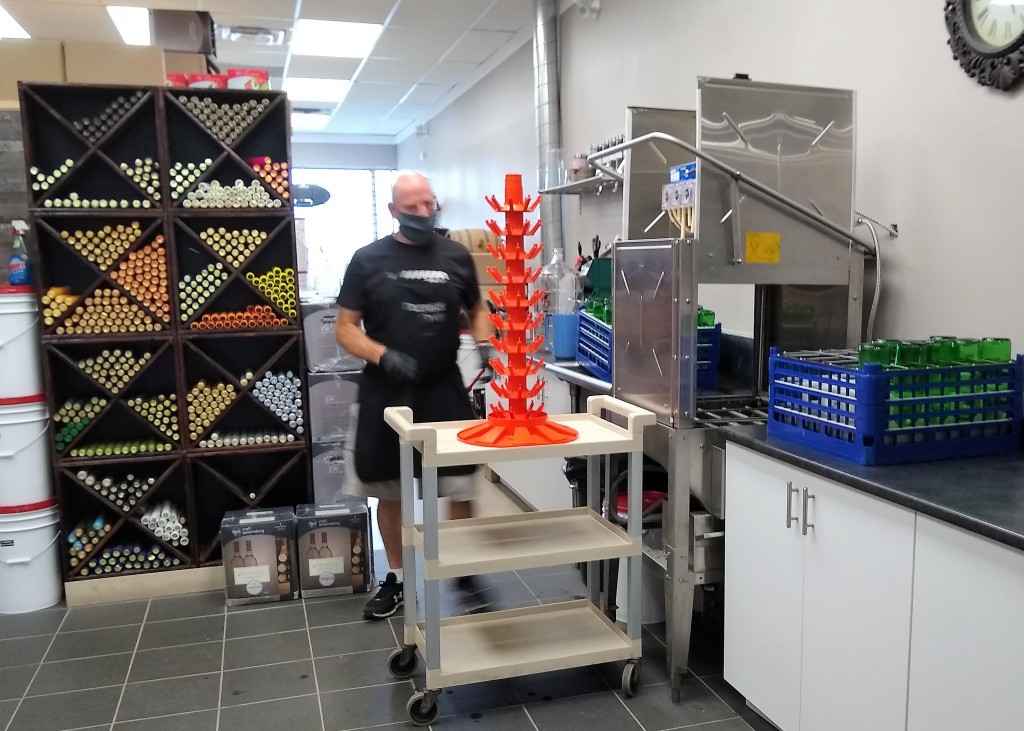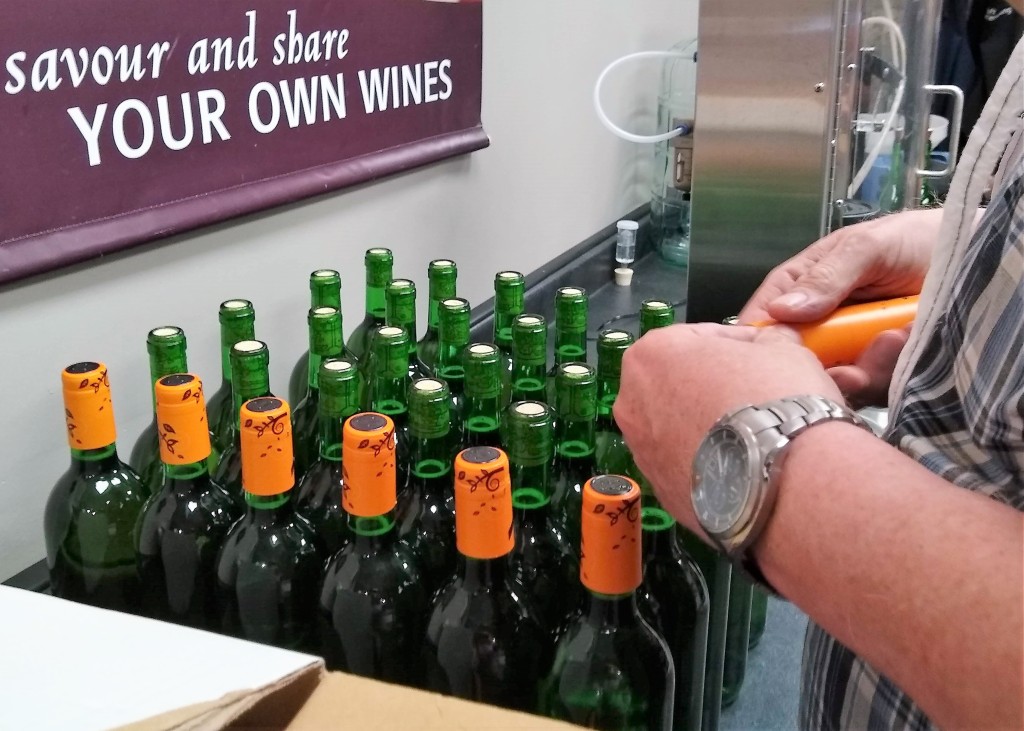Today was the appointed day to bottle our wine – a pinot grigio we “made” at Premium Vintages (see June 23 CDR). It turns out the hardest and most time consuming part of making wine is washing the old bottles. First, we went to the neighborhood hardware store for a bottle brush because that’s one thing our kitchen doesn’t have. Unfortunately, the bottle brush we obtained we should have skipped. It was too short and had an unfortunately useless curl at the tip. As a result, it took more than a couple of hours to clean 3-dozen-minus-one wine bottles.
Result #1: Our household has a new rule: wine bottles are washed when they are emptied and then the mouths of the bottles are wrapped with plastic. Dried-on wine dregs are a PITA.
Result #2: We brought 3-dozen-minus-3 bottles to the Premium Vintages at 5 PM tonight for filling and corking – two bottles were stubbornly gunked up with wine sediment – or something.

The store manager (Mark, I think) sterilized our bottles and racked them. He then showed us how to fill the bottles – but ended up filling them all himself anyway. The corking contraption is the silver tube, and between the two of us we corked them, and then put on the plastic sleeves. The sleeves were heat-shrunk to the bottles with a heat gun (looks like a hair dryer).

We ended up with 29 and a half bottles. We drank the half bottle tonight with our dinner. It was drinkable. We also purchased a real bottle brush while we were there. It was $6. The shrink caps were $3.

Next, we need to make some labels – date, type, and appellation. For the latter, I am considering Agate Bay, Laughing Loons, or Devil Track.
Later this evening, I cut several dozen mask fronts and linings while listening to a Zoom sponsored by the Maryland Women’s Democratic Club about sentencing juvenile offenders to life in prison. Some states have a mandatory judicial review of these life sentences after a certain duration of time – 20 years, 15 years, 25 years. Other states, including Maryland, have juvenile offenders incarcerated with no possibility of parole, ever. Since people change over time and juveniles’ brains are scientifically not mature, there is reason to think that there should be some kind of review of cases to find out whether the incarcerated person can be released to and contribute to civilian society. Juveniles who are sentenced to life without parole have generally done terrible things. Life without parole, institutionalized vengeance, makes some people feel better about that. But there are costs, to the individual, the individual’s family, the society that could be getting meaningful contributions from the individual, and the tax payer footing the annual bill for upkeep of the individual (and that’s between $30,000 and $60,000 per year – equivalent to a firefighter’s or teacher’s salary, for example.)
It was an interesting presentation.
Be well. Stay safe. Carry on.